Features
Superior endpoint security technologies plus far-reaching systems management capabilities – with a single unified management console.
Protecting Windows, Linux & Mac Desktops & Laptops*
Delivering multi-layered security
Our latest anti-malware engine combines signature-based security, heuristic & behavioral analysis and cloud-assisted technologies – to protect your business against known, unknown and advanced threats. It can defend any combination of Mac, Linux and Windows desktops and laptops.
Updating security more efficiently
Because cybercriminals are continually launching new and more complex malware, we deliver database updates on a much more frequent basis than many other security vendors. In addition, we use multiple advanced security technologies to ensure we deliver greatly improved detection rates – while also cutting the size of updates… so more of your communications bandwidth is available for other tasks.
Protecting against unknown and advanced threats
When a new malware item is unleashed on the world, there’s a period of high risk. To deliver zero-hour protection against these threats, Kaspersky Lab technologies and threat intelligence continually evolve to ensure your business is protected from even the most sophisticated, new threats.
Detecting suspicious behavior
Whenever an application launches on your corporate network, our System Watcher module monitors the application’s behavior. If suspicious behavior is detected, System Watcher automatically blocks the application. In addition – because System Watcher keeps a dynamic log of the operating system, registry and more – it automatically rolls back malicious actions that the malware implemented before it was blocked.
Protecting against exploits
Our innovative Automatic Exploit Prevention (AEP) technology helps to ensure malware can’t exploit vulnerabilities within the operating systems or applications that are running on your network. AEP specifically monitors the most frequently targeted applications – including Adobe Reader, Internet Explorer, Microsoft Office, Java and many more – to deliver an extra layer of security monitoring and protection against unknown threats.
Controlling applications and connectivity
For some applications – even though the applications may not be classed as malicious – their activities may be regarded as high-risk. In many cases, it’s advisable that these activities are restricted. Our Host-Based Intrusion Prevention System (HIPS) restricts activities within the endpoint, according to the ‘trust level’ that has been assigned to the application. HIPS works together with our application-level Personal Firewall – which restricts network activity.
Blocking network attacks
Network Attack Blocker technology detects and monitors suspicious activities on your corporate network – and lets you preconfigure how your systems will respond if suspicious behavior is identified.
Using the power of the cloud – for even better security
With millions of users letting the cloud-based Kaspersky Security Network (KSN) receive data about suspicious behavior on their computers, your business can benefit from improved protection against the latest malware. This real-time flow of data ensures customers can benefit from a rapid response to new attacks – and it helps to minimize the incidence of ‘false positives’.
Protecting Your File Servers
Securing heterogeneous environments
Our award-winning security protects file servers running Windows, Linux or FreeBSD. Optimized scanning processes help to ensure there’s minimal impact on the performance of your servers. In addition to protecting cluster servers, we also defend Microsoft and Citrix terminal servers.
Ensuring reliable protection
If one of your file servers develops a fault, our security technologies will automatically re-launch when the file server restarts.
Boosting manageability
Every minute you have to spend on administration and generating reports, is time you could be devoting to strategically important activities. That’s why we provide a centralized console that lets you manage security on all your endpoints – file servers, workstations and mobile devices – and makes it easy to generate detailed reports.
Enhancing Security & Extending Systems Management
Eliminating known vulnerabilities
Our technologies scan your entire network – to identify vulnerabilities that result from unpatched applications or operating systems. Detected vulnerabilities can be automatically prioritized – and then patches and updates can be automatically distributed. Because we distribute new patches more rapidly than many other patching solutions, we help you to eliminate vulnerabilities within a shorter period.
Managing your hardware & software assets
All devices and software on your network are automatically discovered and recorded in a hardware inventory and a software inventory. The hardware inventory includes detailed information about each device and the software inventory helps you to control software usage and block unauthorized applications. Even guest devices that appear on your network can be automatically discovered – and provided with access privileges, without compromising the security of your corporate systems and data.
Optimizing the distribution of applications
You can deploy software at your command or schedule it for after office hours. For some installers, you can specify additional parameters in order to customize the software package that is installed. The use of secure, remote connections to any desktop or client computer helps you to resolve issues rapidly – and an authorization mechanism prevents unauthorized remote access. For traceability, all activities during a remote access session are logged.
Automating & optimizing OS deployment
Our technologies automate and centralize the creation, storage and cloning of secured system images. Images are held in a special inventory – ready to be accessed during deployment. Client workstation image deployment can be made with either PXE servers (Preboot eXecution Environment) – that have been previously used on the network – or using our own features. The use of Wake-on-LAN signals lets you automatically distribute the images after office hours. UEFI support is also included.
Reducing traffic – remote distribution
If you need to distribute software or patches to a remote office, one local workstation can act as the update agent for the entire remote office – to help reduce traffic levels on your network.
Integration with SIEM systems
Because security information and event management (SIEM) systems can play a vital role in helping enterprise-level businesses to gain real-time monitoring, we’ve included integration with two of the most popular SIEM products – HP ArcSight and IBM QRadar.
Encrypting Confidential Information
Strong encryption
By using an AES encryption algorithm that has 256 bits of key length and is NIST approved (#2980), we deliver strong encryption for your confidential information. If files or systems are lost or stolen, unauthorized users will not be able to access your encrypted data. Our encryption has also been designed to be FIPS 140-2 compliant (validation pending).
Integrated – for improved manageability
Although many vendors’ encryption products are not delivered as part of an integrated IT security solution, our encryption technologies are one component within a unified codebase that has all been developed by our in-house team. This makes it easier for you to apply encryption settings as part of the same policies that cover your anti-malware defenses, endpoint controls and other endpoint security technologies.
Full Disk Encryption and File-Level Encryption
For encryption that's 'close to the hardware' – and to make it easy for you to run an 'encrypt everything at once' strategy – Full Disk Encryption (FDE) operates on the physical sectors of the disk. File-Level Encryption (FLE) helps you to enable secure sharing of data across your network. For additional security – when a file is encrypted – the original, unencrypted file can be wiped from the hard drive.
Encryption of removable media
To protect data that also needs to be transferred on removable devices, Removable Media Encryption can perform Full Disk Encryption and File-Level Encryption.
‘Portable mode’ encryption
If you need to transfer sensitive data via email, the Internet or a removable device, you can easily set up password-protected, encrypted, self-extracting packages of files and folders. A special 'portable mode', for File-Level Encryption on removable media, helps enable the secure transfer of data – even onto computers that are not running Kaspersky Endpoint Security for Windows.
Simplified sign-on and smartcard / token support
When a user switches on their PC and enters their username and password, our Single Sign-On feature will give the user immediate access to the encrypted data on their PC's hard drive. This helps to ensure the encryption & decryption processes are virtually transparent to the user – and that helps to boost efficiency and productivity. Two-factor authentication – via smartcards and tokens – is also supported.
Support for Intel AES-NI and more
By supporting Intel AES-NI, we enable more rapid encryption and decryption of data – for many Intel processor-based and AMD processor-based systems**. Our Full Disk Encryption technology also supports UEFI-based platforms. There’s also support for non-QWERTY keyboards.
Protecting Mobile Devices***
Robust mobile security
By combining the industry’s most advanced technologies, we defend against the latest mobile threats. Anti-phishing protects against websites that try to steal information or identity details – and anti-spam helps to filter out unwanted calls & texts. Flexible control tools let you block the launch of unauthorized applications and block access to dangerous websites. Rooting and jailbreaking incidents are automatically detected – and the devices are blocked.
Separating corporate and personal data
Our ‘app wrapping’ technology lets you set up special containers on each device. Corporate applications are stored in the containers – totally separated from the user’s personal data. You can enforce encryption for all containerized data and prevent data from being copied and pasted outside the container – plus you can request additional user authorization before containerized applications are allowed to launch. If an employee leaves your business, the remotely operated Selective Wipe feature lets you delete the corporate container – without deleting the device owner’s personal data and settings.
Supporting common MDM platforms
With improved mobile device management (MDM) capabilities, it’s easy to apply group or individual MDM policies to Microsoft Exchange ActiveSync and iOS MDM devices – through a single interface. Support for Samsung KNOX lets you manage various settings for Samsung devices.
Locking, wiping and locating missing devices
Remotely operated security features help to protect corporate data on missing devices. Administrators and users can lock the device, delete corporate data and find the device’s location. If a thief changes the SIM card, our SIM Watch feature sends you the new phone number – so you can still run the anti-theft features. Support for Google Cloud Messaging (GCM) helps ensure Android phones receive anti-theft commands rapidly.
Self-Service Portal
Our special Self-Service Portal makes it easy to enable personal mobile devices onto the corporate network. In addition, the portal gives users remote access to key anti-theft features – so users can rapidly respond to the loss of a device and reduce the risk of data loss, without adding to the load on administrators.
Easing the burden on IT administrators
A single centralized console lets you manage mobile devices – and their security – and makes it easy to apply consistent policies across different mobile platforms. In addition, our Web Console lets you manage mobile devices and their security – plus the security of other endpoints – from anywhere you can get online.
Controlling Applications, Devices and Internet Access
Dynamic Whitelisting – to complement security
Our Application Control is the industry’s most comprehensive implementation. We’re the only security vendor that has invested in establishing its own Whitelisting Lab that checks applications for security risks. Our database of whitelisted applications includes over 1.3 billion unique files – and it’s growing by a further 1 million files per day. Application Control and Dynamic Whitelisting makes it easier for you to run a Default Deny policy that blocks all applications, unless they’re on your whitelist. If you’re looking to introduce or update a Default Deny policy, our new test mode lets you set up the policy in a test environment – so you can check your policy is correctly configured, before you ‘go live’.
Preventing the connection of unauthorized devices
Device Control tools make it easy to manage which devices are allowed to access your corporate IT network. You can set up controls that are based on the time of day, geographic location or the type of device. You can also align the controls with Active Directory – for granular administration and policy assignment. Administrators can also use masks in the creation of Device Control rules – so multiple devices can easily be whitelisted for use.
Monitoring and controlling Internet access
Our Web Control tools let you set up Internet access policies and monitor Internet usage. It’s easy to prohibit, limit, allow or audit your users’ activities on individual websites or categories of sites, such as games websites, social networks or gambling sites. Geographic and time-of-day controls may be aligned with Active Directory – to help in administration and setting policies.
Centralizing Management Tasks
Letting you control all functions from one console
Kaspersky Endpoint Security for Business | Advanced includes Kaspersky Security Center – a single unified management console that gives you visibility and control of all of the Kaspersky Lab endpoint security technologies that you’re running. Kaspersky Security Center lets you manage security for your mobile devices, laptops, desktops, servers, virtual machines and more – with the convenience of a ‘single pane of glass’ console.
Assigning different responsibilities to different administrators
Role-Based Access Control helps you to divide security management & systems management responsibilities between multiple administrators. For example, you may want one administrator to manage endpoint security, endpoint controls and mobile security, while another administrator takes care of data encryption and all systems management functions. The Kaspersky Security Center console can easily be customized so that each administrator only has access to the tools and information that are relevant to their responsibilities.
Delivering a higher level of integration
Because tightly-integrated code results in products that deliver improved security, performance and manageability, all of our endpoint technologies have been developed by our own in-house team. All of our endpoint protection functionality is contained in the same codebase – so there are no incompatibility issues for you to deal with. Instead, you benefit from seamlessly integrated security technologies that do more to protect your IT environment – while centralized management saves you time.
*Not all features are available on all platforms.
**Not all processors are supported.
***Some features are not available for some of the supported mobile platforms.
Compare Editions
What Security Solution is right for your business?
Choose the best option for your business. Want to add more functionality? Just upgrade to the next tier.
| |
Select Plan |
Advanced Plan |
Total Plan |
|
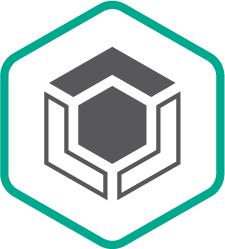
Select |
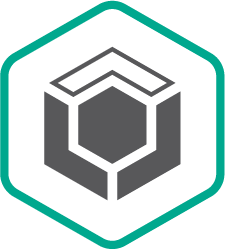
Advanced |
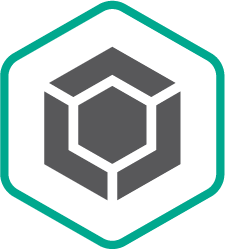
Total |
| Defense for PC, Linux, Mac, Android, iOS |
|
|
|
| Defense for application and terminal servers |
|
|
|
| Defense for web gateways and email servers |
|
|
|
| Mobile Threat Defense |
|
|
|
| Application, Web & Device Controls for PCs |
|
|
|
| Behavior Detection, Remediation Engine |
|
|
|
| Vulnerability Assessment & Exploit Prevention |
|
|
|
| Environment variable permissions and HIPS |
|
|
|
| AMSI, Microsoft Active Directory, Syslog, RMM, PSA, EMM integration |
|
|
|
| Kaspersky Sandbox and Kaspersky EDR Optimum integration |
|
|
|
| Web, Email threat protections and controls for servers |
|
|
|
| Adaptive Anomaly Control and Patch Management |
|
|
|
| Encryption and OS-built-in encryption management |
|
|
|
| Advanced SIEM integration, OS & third-party software installation |
|
|
|
| Inbound and outbound content filtering |
|
|
|
| Anti-spam protection at gateway level |
|
|
|
| Web traffic security and web controls at gateway level |
|
|
|
IT professionals remind us every day that their occupation is becoming increasingly difficult
The job has always been hard, but now the level of complexity across the network and connected devices seems out of control. There is often frustration over the lack of resources, shrinking budgets, and users who take your policies to the limit. Once stationary, data has now migrated across multiple systems, smartphones and tablets and is often located in coffee shops, airplanes and left behind in taxis. And of course, application patching to stop vulnerabilities has become a fulltime job (that is if you can ever really know which applications are being used). This complexity has forced some organizations to make security compromises.
You need a new, uncomplicated way to deal with these changes and threats
Administrators can see, control and protect their IT environment with Kaspersky Endpoint Security for Business. Tools and technologies are uniquely balanced across progressive tiers to meet your evolving security and IT needs. Kaspersky can make your job easier.
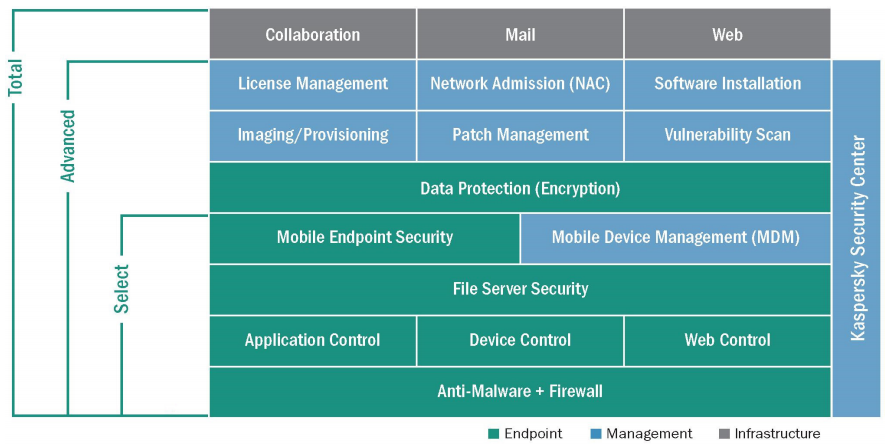
Kaspersky boasts a comprehensive list of technologies — all working together from the same codebase and further assisted by the cloud-based Kaspersky Security Network — to give our customers the worldclass protection they need. In short, we’ve delivered the industry’s frst Security Platform, built from the ground up, making it easy for you to see, control and protect your world.


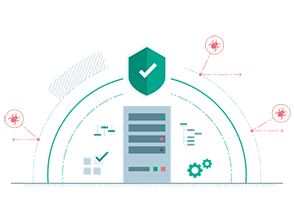
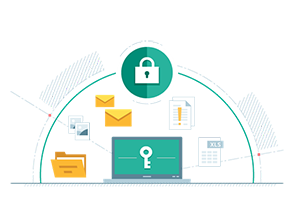

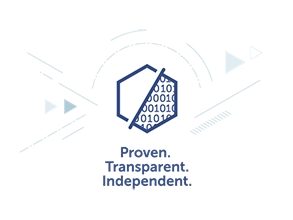
![]()
![]()
![]()
![]()
![]()
![]()


